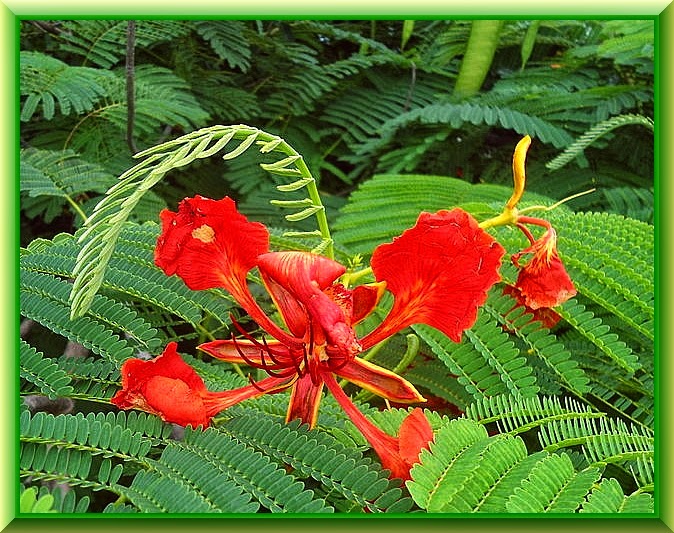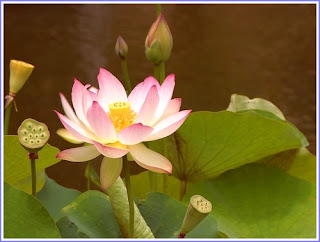Gulmohar, Tree of Flamboyant Beauty
 |
| Gulmohar tree, foliage and flowers |
Trees add value to the planet since all produce oxygen,
add organic matter to soil, help stabilize climate and offer sites for birds
and insects to make their homes and playgrounds on. Some trees produce
food for humans and diary animals and these need to be given emphasis in modern times because of a
currently huge and rising population on the planet. Nonetheless, beauty is
required too because
While fruit and seeds feed the body, beauty feeds the soul.
While it is trees like the almond, peach and cherry that
provide beauty as well as food in cooler parts of the planet, it is trees like Palash,
Gulmohar and Jacaranda that are some of the most beautiful trees in regions
with hot summers. The Gulmohar tree is a beautiful tree
because both its flowers and feathery fern-like leaves are exceedingly
beautiful. Flowers range in color from yellow to bright red. The botanical
name of this plant is Delonix regia. It is also known as the flame of the
forest.
The seeds yield about 20 percent fatty oil known as the
“karanga” oil. Its main use is in the tanning industry. The oil also
finds use in soap- making, illuminating and pharmaceutical preparations. The
oil cake is a good fertilizer. The seed cake can also be used in poultry rations
to substitute black “til” component.
Although this needs to be researched further , the oil is likely to be a good bio-fuel too. It may be made to simulate both diesel and gasoline by mixing in different proportions with ethanol, another bio-fuel.
The plant has medicinal uses although this too needs
further research.
One impediment towards modern research is what appears to be the abominable practice of modern medicinal research, born of pharmaceutical greed to do research on extracts i.e. unnatural chemical products rather than what God made i.e directly the plant product, thus producing medicines that are often not only deficient but also those causing harmful side effects. The justification used for working on extracts is that dosage can be controlled but it is false argument because there are other natural ways of controlling dosage e.g. mixing plant product with another neutral food product in different proportions to maintain fixed dosage by volume.
Gulmohar leaf is used in folk medicine of Bangladesh for
treatment of diabetes, but so far no scientific studies appear to have been done to confirm this use in traditional medicine. It appears that the the seed purifies and
enriches blood and is used in cases of inflammation, ear ache and chest
complaints. The oil appears to possess insecticidal and anti-bacterial
properties. Leaves and flowers of this plant may be edible
seeing fondness of cows and other animals for them however this use of the
tree needs to be explored and verified further.
Image modified from:
http://commons.wikimedia.org/wiki/File:Delonix_regia_gulmohar_flower_Thotlakonda_Visakhapatnam.JPG
This file is licensed under the Creative Commons Attribution-Share
Alike 3.0 Unported license.





Comments